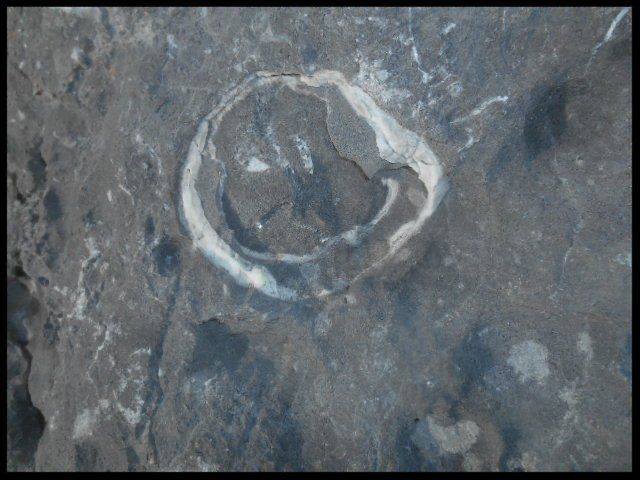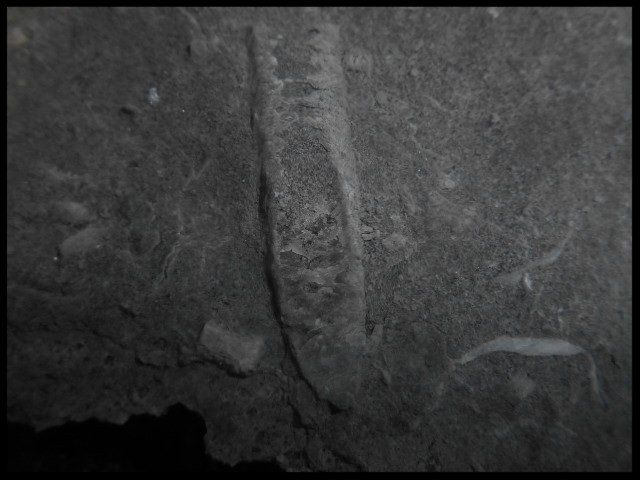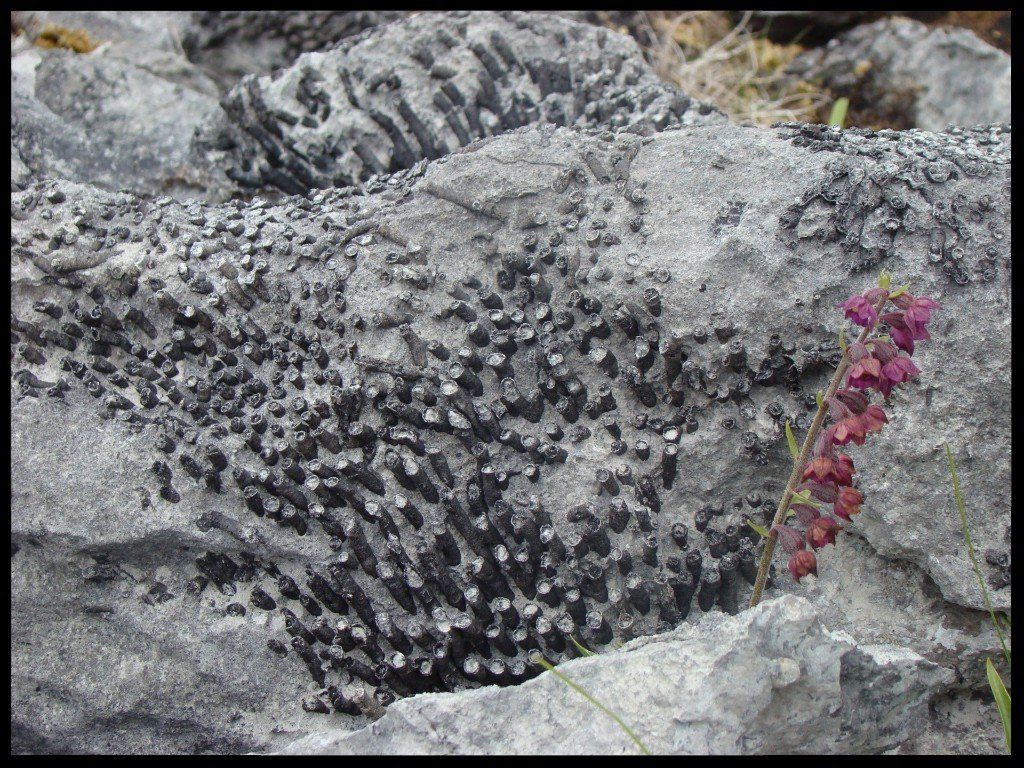Common Burren Fossils
INTRO
The Burren, (and about half of the area of Ireland), is made up of Carbonifeous limestone - part of a shallow ocean bed which was once 10 degrees below the Equator. Due to remarkable earth movements - plates colliding in the Earth's crust and continental drift - some of that former ocean bed got uplifted onto the Earth's surface and made it to northern latitudes.
The limestone consists in part of skeletons of dead sea creatures and plants which were compacted on the ocean floor by the weight of the ocean.
Three of the most common fossils in the Burren are brachiopods, crinoids and corals.

BRACHIOPODS
Brachiopods are shellfish with two valves. They are still alive today in tropical waters. They live attached to the sea floor by a tough ligament-like stalk. Brachhiopods feed by filtering tiny particles of food out of sea water. In fossil form, only one valve is usually visible. The brachiopod is probably the most common fossil visible in the Burren.

CRINOIDS
The crinoid family is comprised of sea lilies and feather stars. The crinoid has a long stem topped off by feathery arms. The arms are used to pluck food particles from the ocean. The creature's skeleton is held together in life by ligaments and skin. On death, the ligaments and skin decompose leaving just the many skeleton pieces.
If the rock is cut in cross-section, the fossils appear as small, white circular structures.
If it is cut length-wise, the fossils consist of two parallel lines with a jagged edge where the two lines meet, (as in photo above).

CORALS
Corals inhabit shallow tropical waters and live in a symbiotic relationship with algae. The algae obtain energy from the sunlight on behalf of the coral. Corals are related to jellyfish and sea anemone. They are the reef builders extraordinaire in our oceans today.
Most of the corals in the Burren are colonial, (as in the photograph), though some are solitary. The corals above are cut in cross-section and appear tube-like in structure They are located on the Nature Trail in the Burren National Park.



